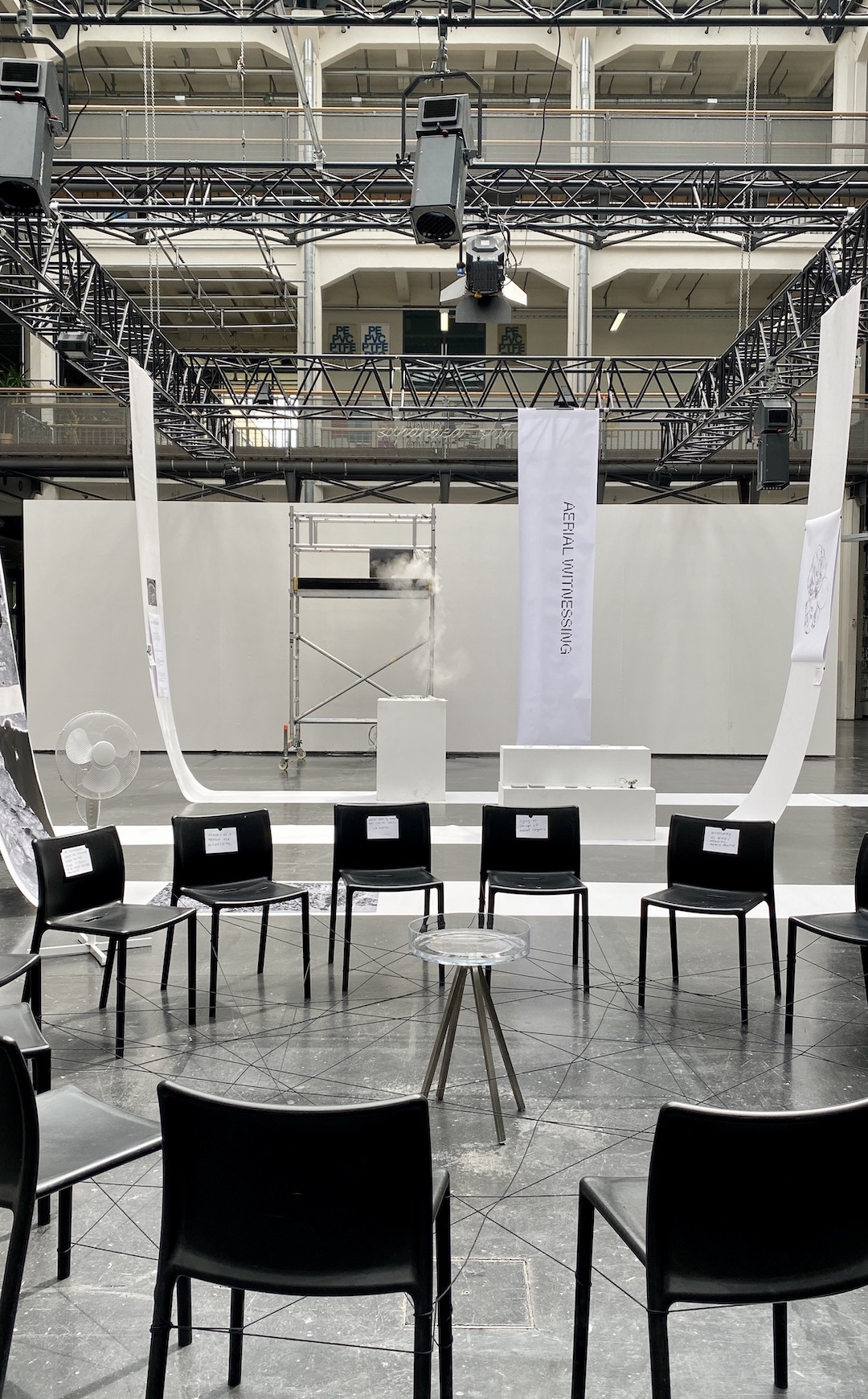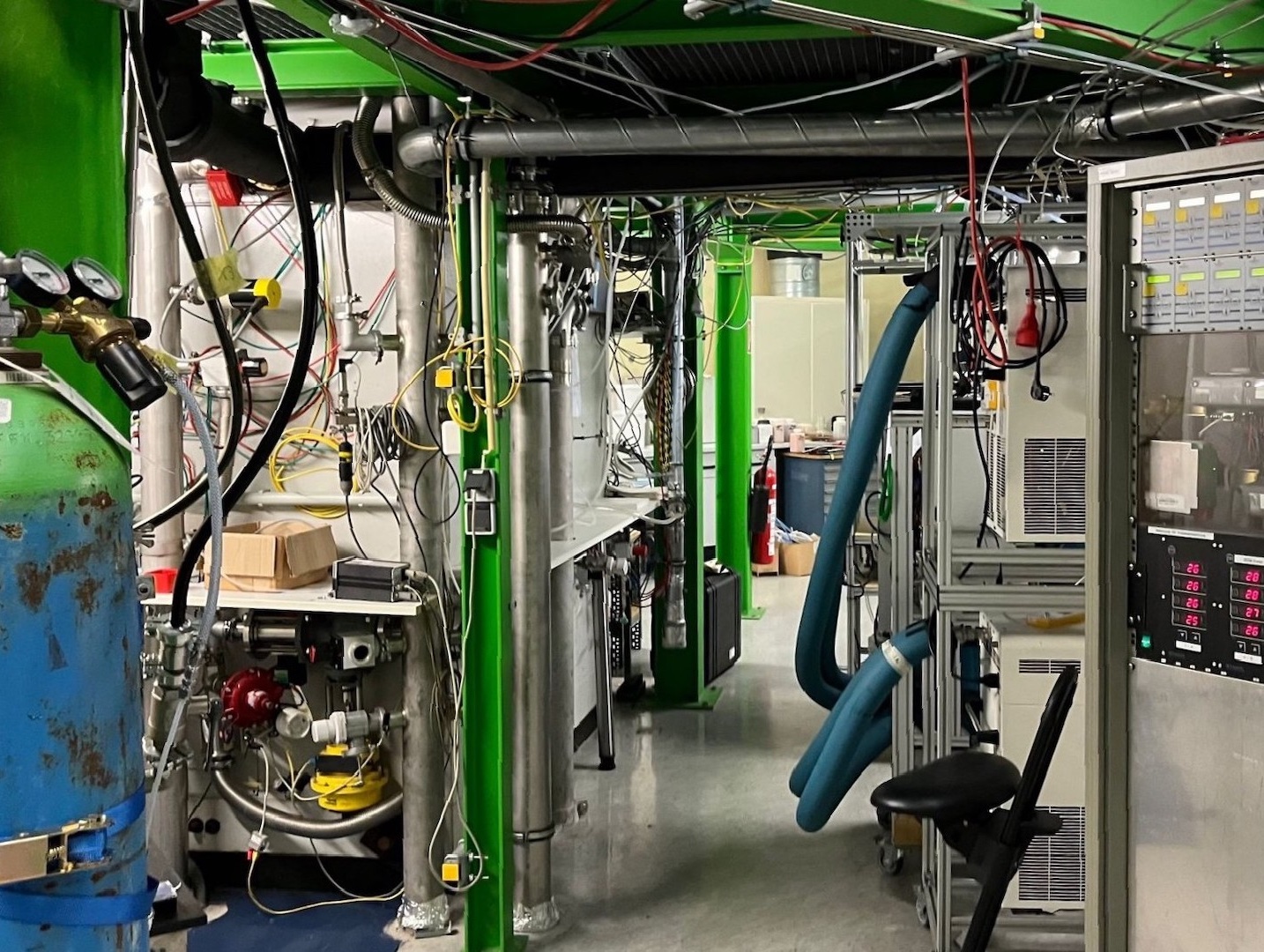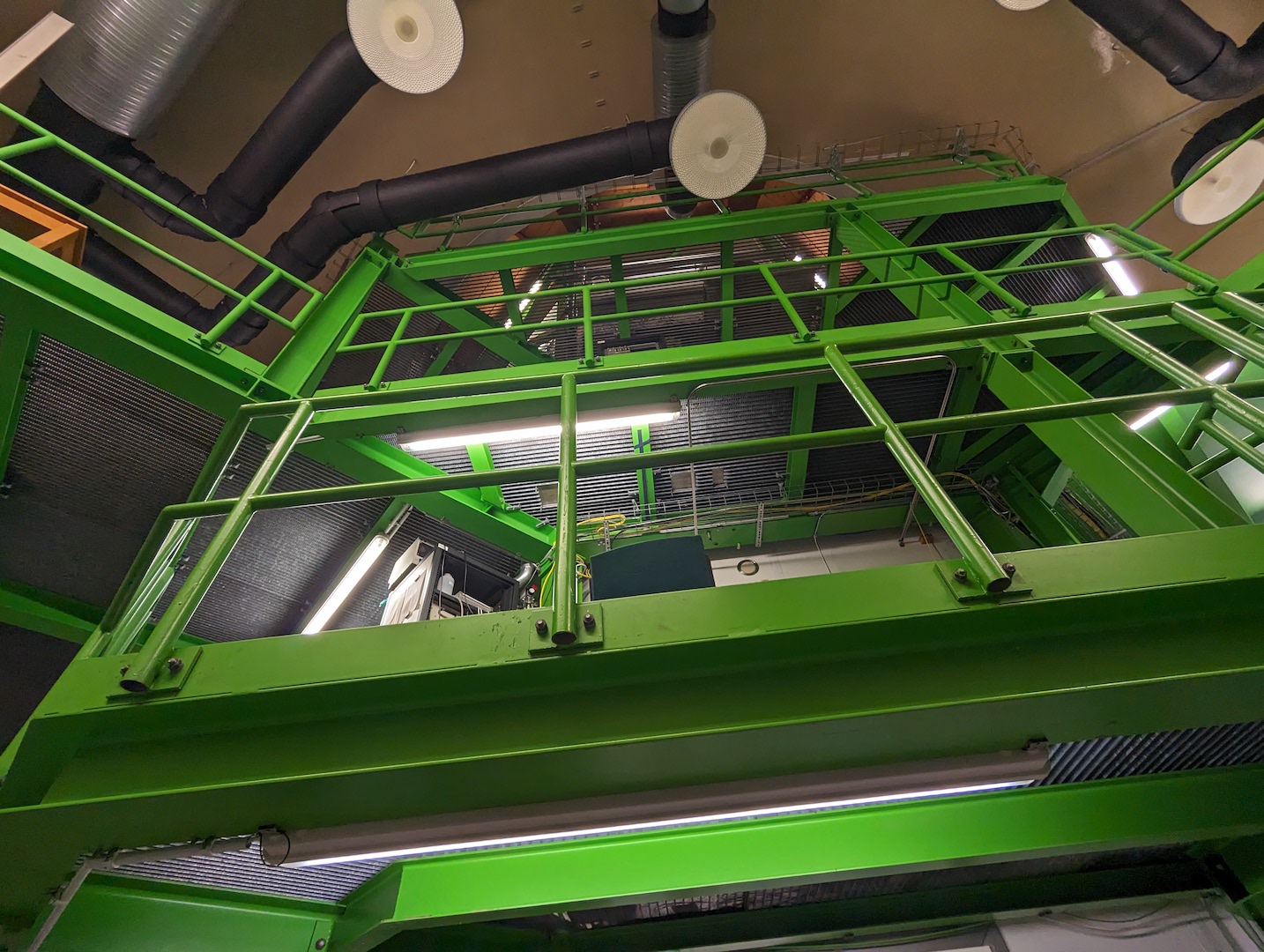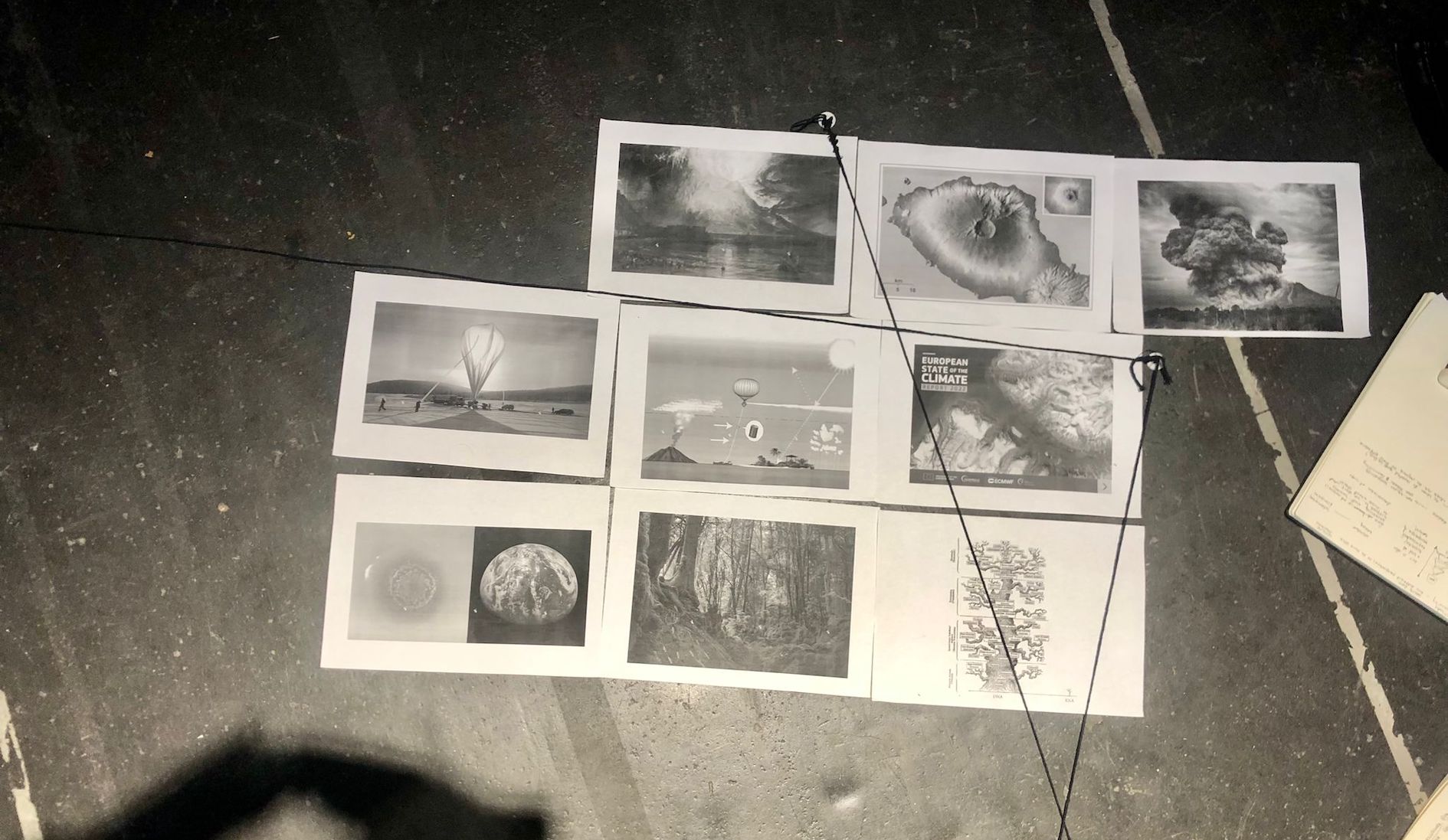



The ideation for the project began with a site visit to the AIDA cloud chamber at the Karlsruhe Institute of Technology, embodied explorations of collecting samples of air, readings, and discussions around what it means to witness air. Considering air as a substance that exists in multiple scales while being invisible to the human eye, witnessing it reveals just as much about the positionality of the witness as it does about the qualities of air itself.
My collaborator and I further examined the question of aerial perspective through the specific solar geoengineering experiment. Proposed by a team of Harvard scientists and having the testing ground set in Kiruna, Lapland, the experiment(SCoPEx)proposes a solution to global warming by injecting aerosols 20km into the stratosphere to scatter the sunlight hitting the Earth. The experiment was called off after it was met by protests from the indigenous population of Kiruna and environmental groups.
It is difficult to reframe from anthropocentric perspectives as large scale climate engineering becomes a possibility. As the environment can become discretized and decontextualized into data quantifiable by machines and algorithms, we cannot forget the existence of localized, embodied knowledge that continuously forms as we tread along the threshold between air and ground. Consdering cartography as a representation of power, dictating the lens through which the land is perceived, we made comparative maps of the same location speculating the perspective of the scientists, the local population, and the air itself.

Atmospheric Aerosol Research Division at the Karlsruhe Institute of Technology

The AIDA cloud chamber

Artifacts collected in search of air

Initial brainstorming